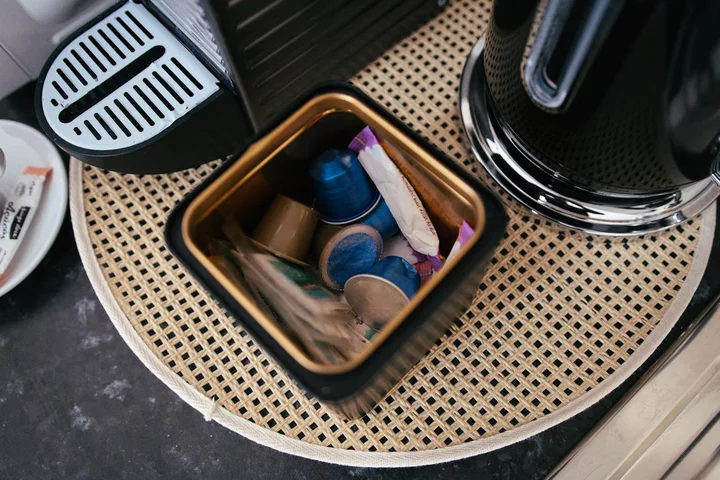Photo by Jaycee300s via Pexels.
If you drink coffee, there’s a chance you have a brewing ritual. A ritual that you likely have some attachment to. Hey, maybe you’re even passionate about it. It can be an immersive sensory experience: Grinding the beans and inhaling their rich, earthy scent. Waiting for the kettle to whistle and emit a stream of vapor if you’re using a French press or pour over. The distinctive, rain-like sound of a drip coffee machine filling your kitchen as the sun breaks free of the horizon. At its best, it can be a mindfulness practice, a reminder to slow down and appreciate the moment. To start the day with a level of presence and patience.
Or… you could pop in a K-cup.
While the stripping away of ritual in favor of speed and convenience is arguably problematic for the human psyche, this is a column about environmental sustainability. But there’s usually a correlation between things that are bad for our mental health and practices that are bad for our planet. NPR reported last year that Keurig agreed to pay $1.5 million in penalties for misleading statements about how recyclable their single-use pods are. Just because they’re technically recyclable, it doesn’t mean it’s easy to do so, leading to a history of large recycling companies not accepting them. A Berkeley non-profit called “The Story of Stuff Project” estimates that the number of K-cups currently in landfills “could wrap around the planet more than 10 times.”
There must be more sustainable ways to enjoy the world’s favorite caffeinated beverage, right? Why yes, there are. So many ways:
- Reusable K-cups: If you’re smitten with the Keurig system, you can invest in stainless steel, reusable K-cups. Simply pack it with ground beans, pop it in like you would the single-use variety, and hit “go.” Toss the grounds and rinse it afterwards, and you’re free to use it over and over.
- Coffee filters: Spare the planet from all those paper coffee filters that add up over the years, and invest in a reusable coffee filter for your drip machine. The metal ones are easy to clean and can be used for years. If you’re attached to paper filters, opt for the ones that aren’t bleached white, as those can’t be composted.
- Consider the French press: This method has a built-in filter and doesn’t require any waste other than the beans.
- Compost those beans: Coffee grounds are a fabulous addition for the compost. If you compost for your own garden, you can personally reap the benefits. If not, it’s great to toss them into the local green bins if you’re able to.
- Coffee on the go: Most coffee shops are happy to fill your personal mug or to-go container, which reduces overreliance on single-use cups. These single-use plastics are often not recycled despite being labeled as such. And some places, like Jitter Bean, give a discount on your drink when you use the mug you purchase from them, so it eventually pays for itself. Plus, it keeps my coffee hot for hours.
- Forswear the straw: If you don’t have a reusable mug the next time you’re in the coffee shop drive-thru, resist the offer for a straw to go with your cold drink. Many single-use cups now have built-in spouts, making straws unnecessary. If straws are your jam, consider investing in the reusable version. I found some that are dishwasher safe and BPA free. Finding the right system for having them available in my car or purse when I’m on the go remains elusive to me. Drop your strategy in the comments if you’ve got a successful one!
Happy (sustainable) caffeinating!
###
Ashley Nichole Thomas is a marriage and family therapist who’s passionate about shrinking her carbon footprint. In her free time she writes fantasy novels, and remains unconvinced that fairies don’t exist.

CLICK TO MANAGE